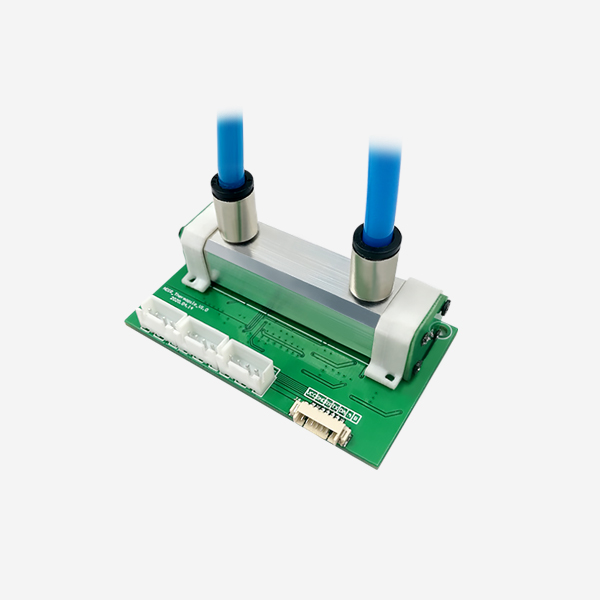The NDIR type gas sensor uses the infrared absorption properties of gas molecules to calculate gas concentration. Therefore, the NDIR type gas sensor consists of infrared emitter emitting infrared light and infrared sensor detecting infrared light. The performance of the NDIR gas sensor depends on the type of infrared emitter and infrared sensor.

Infrared Light emitter
Light emitters can be broadly classified into two types: optical type and thermal type. The optical type directly converts current into light by using the recombination of electrons and holes in a semiconductor. The thermal type emits light by supplying current to the heat element and consequently heating the object. Each type is explained together with the specific features of the product.
LED (Optical type)
When a forward voltage is applied to an LED (light-emitting diode), electrons and holes move, causing recombination. When this recombination occurs, the light of the wavelength specific to the substance is emitted. LEDs in the visible region of the human eye, such as white LEDs and blue LEDs, are used throughout everyday life. However, because many gas molecules have absorption wavelengths in the infrared region rather than in the visible region, LEDs that emit infrared light suitable for NDIR type gas sensors are required. For this reason, Asahi Kasei Microdevices (AKM) is developing LEDs with emission wavelengths in the infrared region where gas molecules are absorbed.
Lamp (Thermal type)
When current is supplied to a filament in a lamp, Joule’s heat is generated, thereby heating the filament and emitting light due to a high temperature. This is the mechanism for illuminating a lamp. Tungsten, which is commonly used for a filament, can reach temperatures as high as 2000°C. to 3000°C. Since filaments become extremely hot, the inside of the bulb is encapsulated with a rare gas or a halogen gas to prevent the filaments themselves from being oxidized or evaporated.
The lamp is a very common old-fashioned infrared light emitter and can also be useful as a light emitter for gas sensors. Gases have an inherent absorption of infrared rays depending on the type of gas. Since a lamp can emit light at a variety of wavelengths from the visible region to the infrared region at once, a single lamp can accommodate a variety of gas types.
So we think of a lamp as a universal light transmitter. Since a thermal infrared light emitter requires time for the temperature to rise and to emit light, and accordingly, the time for applying a voltage also increases, resulting in greater power consumption.In addition, because the filament is susceptible to vibration. When we use the lamp as an infrared emitter, we must pay attention to the surrounding environment where the gas sensor is installed.
Infrared Sensor

Infrared sensors can also be broadly classified into two types: optical type and thermal type. The optical type uses the photovoltaic power of a semiconductor to directly convert light into current. The thermal type uses a method that detects a voltage or polarization caused by a temperature difference when an object gets warm. Each type is explained together with the specific features of the product.